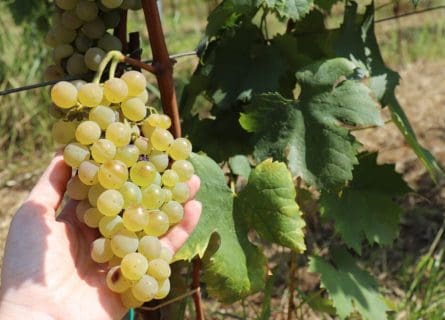
Carricante Grape Variety: Sicily’s secret weapon
November 16, 2022
Sicily's Carricante grapes thrive on Mount Etna's slopes, producing fresh, high-acidity white wines with complex aromas, a hallmark of Etna Bianco DOC.
Estimated reading time: 26 minutes
One of the most enduring Italian stereotypes is the ‘mammone’: spoilt, live-in mummy’s boys who expect their parents to pay the rent, cook their food, and iron their shirts. It is somewhat analogous to the state of Italy’s white wine industry in the mid-1900s. For centuries, Italian winegrowers have been spoilt. Of course, they’re spoilt by the nation’s incredible topography. In terms of raw potential, Italy has long possessed a natural advantage if superior terroir, sunshine, and a temperate climate are the essential ingredients in premium white wine. The country’s spectacular landscape, defined by a long spine of mountains that start in the Alps and almost touch North Africa, provides endless possibilities in terms of elevation and aspect. The soils, meanwhile, are often volcanic (especially in the south); much is limestone or tuffeau, in addition to gravel and clay.

Moreover, because Italy is so well suited to the vine, it is easy to forget that first-division whites are a relatively new phenomenon. Fifty years ago, the nation’s winegrowers lazily churned out gallons of rustic and unappealing stale white plonk. Like the mammone, they felt no motivation to ‘leave home’ and turn things around.
Yet this caricature of Italian white wine is now woefully outdated. At a time, Italy’s most expensive labels were red, but no longer; Ornellaia Bianco routinely sells for over $250, a white that some critics have compared to top Cru Classe Bordeaux Blanc. Indeed, the delightfully crisp wines of Carricante, Gavi, Greco, Pecorino, and Verdicchio are by no means the only options available. As elsewhere, the labels that critics and collectors most admire share a common DNA: an expression of local terroir, vibrant acidity, and an inimitable freshness that enlivens the soul. The wines are made, of course, with the finest equipment that money can buy.
Meanwhile, pioneers such as Josko Gravner have embraced the past, fermenting white wines on their skins for a prolonged period of time. The results could never pass for a facsimile of unoaked Sauvignon Blanc: Gravner pursues complexity, richness of color, and phenolic depth. Admittedly, these amber-colored and tannic whites will not be to everyone’s taste. But, the sommelier community – and other key influencers – have gone nuts over them. Make no mistake: the best Italian white wines are now taken as seriously as Montrachet and Clos Sainte-Hune.
However, this dramatic turnaround was not simply instigated by a handful of iconoclasts and hipsters. In the late 20th century, the authorities started to address the glaring inadequacies of Italy’s DOC system. The Tuscan wine region is a classic example of this: the old regulations used to insist upon the inclusion of high-yield Trebbiano Toscano into Chianti wines, diluting their quality significantly. In addition, the DOC system (effectively) encouraged winemakers to cut corners, particularly in harvesting an over-generous yield, regardless of whether it led to the best results. Indeed, it penalized winegrowers who attempted to improve quality by planting varieties that were forbidden at the time.
Thankfully, a new law was unveiled in 1992 that revolutionized the whole classification system, adding restrictions that included maximum permitted yields while demoting a number of regions from DOCG to DOC status. It also created the IGT (Indicazione Geografica Tipica) designation. This very flexible classification is appearing on an increasing number of Italian wine labels: many of Sicily’s finest whites, for example, are marketed as IGT. Moreover, it encourages experimentation and innovation – the lifeblood of all competitive wine countries.
The consumer has been the biggest net beneficiary of these sweeping- and vital – changes. Once the butt of jokes, Italy’s white wines continue to get better and better. They range from Pecorino’s crisp delights to Fiano di Avellino’s powerful complexity. Even Trebbiano Toscano, once maligned by every critic on the planet, has been used to make some delicious wine in the hills of Tuscany. Yet to be true to the spirit of Oenotria (land of vines), the incredible diversity of Italy’s white wines must be seen in the context of the nation’s gastronomic heritage. Once upon a time, there were no exceptional bottles to pair with grilled sea bass or freshly caught scallops. In restaurants, sommeliers would (discretely) point you toward the wines of Burgundy and the Loire. But no longer. Today, Italian red and white wines can coexist on the world stage as equals rather than awkward bedfellows.
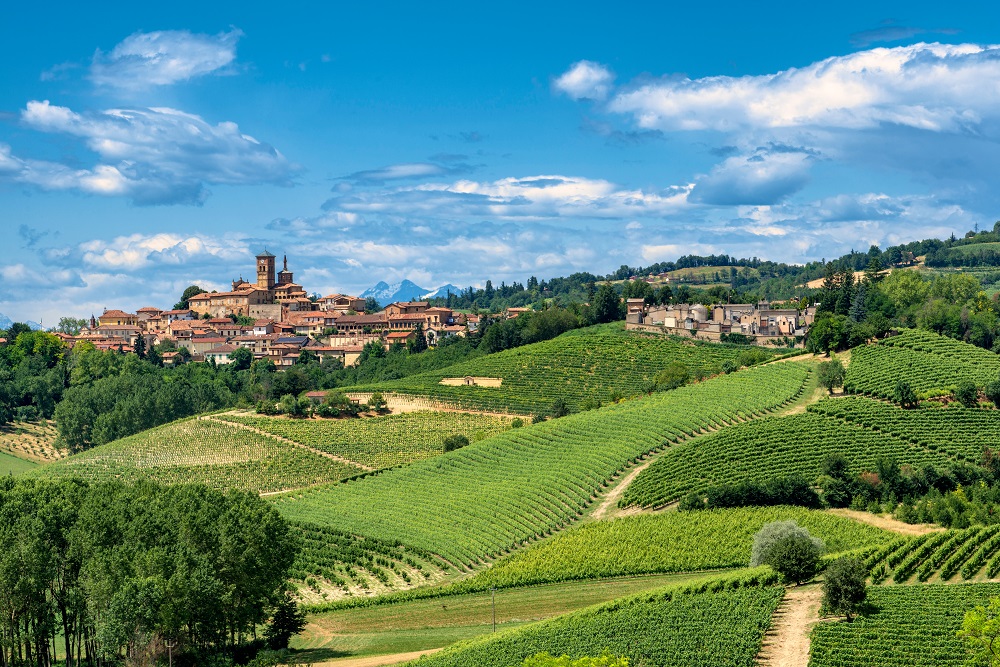
Northwest Italy means Piedmont to the world’s oenophiles and collectors. And Piedmont inevitably means dazzling red wines based on the Nebbiolo grape. Yet the hills around Langhe, Alba, and Monferrato are not only used to produce long-lived and seductive reds. In the vineyards of both Barolo and Barbaresco, you’ll discover one of Italy’s most charming white grapes: Arneis. Much to the amusement of visitors, the name translates as ‘little rascal’ in the local Piemontese dialect. In the 1900s, production was largely reserved for winegrowers’ families, maintained as a quaint hobby. But, as the market for aromatic dry whites exploded at the turn of the century, producers started to view Arneis as a very useful source of additional income.
Moreover, there is plenty of suitable land to grow the variety. In Barbaresco, for example, vineyards planted on higher slopes that are often too cool to ripen Nebbiolo–Arneis will thrive on these cooler terroirs. On the north bank of the Tannaro River, Arneis has been given its standalone appellation: Roero Arneis DOCG. Roero’s fragrant, pear-scented wines are among the finest in Piedmont today.
Of course, there is always fierce competition in Italy. If you head south from the city of Alessandria, you’ll arrive at the heartland of a thriving white wine industry. Light-skinned and beautifully fresh Cortese grapes are the secret behind its global success: Gavi is a leading contender for Italy’s most fashionable dry white. Such is the demand for affordable styles that growers have also planted greater volumes of Arneis in the zone, in addition to the zesty Favorita, the local synonym for Vermentino.
Other specialties of this prolific region include Erbaluce di Caluso, a small zone located north of the city of Turin. Visitors always fall in love with the verdant scenery of Caluso, not least because the village has scarcely altered over the past 100 years. And the wine is simply excellent: a racy mouthful of stone fruit and ripe acidity. Never let it be said that Piedmont lacks diversity!
Main white grape varieties of Piedmont
Arneis
Despite its somewhat difficult nature, Arneis has become a hot ticket in the hills of Piedmont. Unfortunately, it seldom delivers a large crop and is prone to developing fungal maladies like downy mildew. Nevertheless, the results in bottle can be spectacular.
Cortese
Cortese is an early-ripening grape that is relatively easy to grow. However, its natural vigor must be controlled if the winegrower desires premium quality.
Erbaluce
Like Cortese, Erbaluce is minded to deliver an overly generous yield unless its growth is strictly controlled. However, it will reward the winemaker with high-quality berries packed full of aroma and flavor compounds.
Timarasso
Another esoteric feature of the Piedmontese landscape, Timorasso, is quite easy to cultivate. Unless the vintage is disastrous, the grape will deliver a good yield of ripe berries to make floral and aromatic wine.
Vermentino
The crisp, lemony Vermentino has become a global favorite because it ticks many boxes. Vermentino is a gift to wine lovers: Fresh, affordable, and consistent. It is also relatively straightforward to grow.
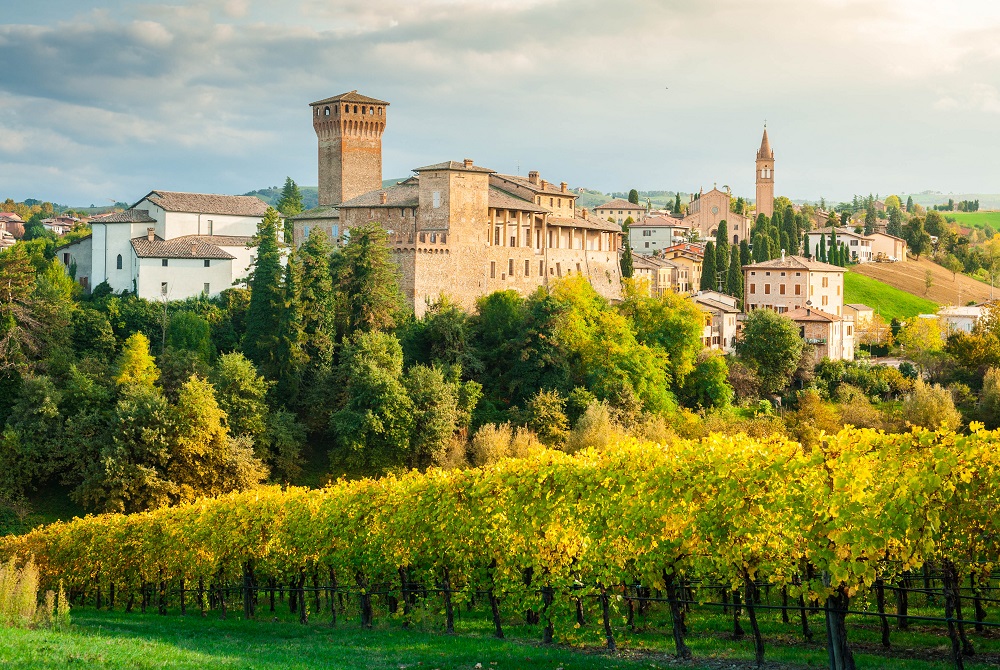
Unlike the bucolic vineyards of Friuli-Venezia, Emilia-Romagna has traditionally had little clout in the white wine department. In the 20th century, almost no premium wine was exported. With splendid Bologna as its capital, this region saw little reason to up its game. However, Emilia-Romagna’s reputation as a white wine producer has been steadily rising as wineries look to foreign markets to bolster their incomes – the overall consumption of still wine in Italy has been declining of late. The hills around Bologna have been planted to several international varieties, including Sauvignon Blanc. The quality is, overall, quite reassuring.
Yet the region’s true gift to oenophiles is Albana di Romagna. It was the first white wine to be elevated to DOCG status in Italy, much to the chagrin of other regions! Like many Italian whites, it comes in all guises, including sweet, still, and sparkling. But, we find the most excitement in the hills to the east of Forli, where growers manage to coax a great deal of fruit and finesse out of this obscure grape. Nevertheless, it is well worth seeking out.
Main white grape varieties of Emilia-Romagna
Albana
A sorely underrated white variety, Albana is nonetheless not very easy to grow. The main issue surrounds its inherent vigor: it requires a judicious pruning regime and plenty of legwork throughout the growing season. The result, however, can be very pleasing.
Bombino
Another of Italy’s obscure gems, Bombino has traditionally been used as blending material. Yet it can shine without a supporting act if the yield is strictly controlled. The best examples are exotically scented and bursting with ripe fruit.
This is where it all began. Italy’s northeastern corner gave birth to the country’s modern white wine industry, thanks partly to the arrival of stainless steel and much-improved viticultural techniques. Indeed, while standards have progressed enormously across many regions, Friuli-Venezia Giulia started the ball rolling in the late 1970s! It grabbed our attention by producing a critical mass of perfumed, saline, and super-fresh dry whites that were clean as a whistle.
However, the region has evolved considerably since production exploded in the 20th century. The key appellations are Colli Orientali and Collio Goriziano, two subregions offering superior terroir – a mixture of marl and sandstone deposits – and a moderate climate conducive to growing slow-ripening, highly aromatic fruit. Nevertheless, Friuli-Venezia relied heavily on international grape varieties in the 1900s, planting great swathes of Pinot Blanc, Sauvignon Blanc, and some Chardonnay. Such is the global demand for Pinot Grigio that this variety has remained firmly entrenched in the vineyards of Friuli-Venezia: the quality of output ranges from world-class to dross.
Yet, indigenous varieties such as Friulano, Verduzzo, and Ribolla Gialla have recently gained momentum as buyers increasingly prioritize original flavors that cannot be replicated elsewhere. In addition, a growing category of skin-contact wines is being made in the region, championed by Josko Gravner and his contemporaries. Moreover, although the sweet wines of Ramandolo are scarcely the height of fashion, they remain an important part of the area’s viticultural heritage.
Main white grape varieties of Friuli-Venezia Giulia
Friulano
The principal white grape of Friuli-Venezia, Friulano, is identical to Sauvignon Vert. It thrives in this corner of Italy, producing fragrant and zesty white wine.
Pinot Grigio
It needs little introduction: Pinot Grigio is as ubiquitous in supermarkets as cut-price washing detergent. Some would say that the lowest-quality examples taste remarkably similar. Yet, premium wines made with care are often exceptional; skin-contact Pinot Grigio is currently in vogue among the region’s more trend-conscious growers. But traditional styles can be just as fine if the yield is curtailed.
Ribolla Gialla
This is one of our favorite Italian grape varieties. Ribolla Gialla: the name rolls off the tongue! Like Friulano, it is used to make a fresh and perfumed style of white in the region, with notes of lemon cordial, fruit salad, and aniseed.
Verduzzo
One of Italy’s most obscure white varieties, Verduzzo has long been used to make the delectable sweet wines of Ramandolo. In addition, it is relatively easy to grow due to the variety’s robust nature and disease resistance.
The Adige Valley is famous for providing transport links between Italy and Austria, a multicultural hub of different languages, customs, and gastronomic experiences! And yet, the region’s significant wine output has only recently been given the respect it deserves. This is partly due to a reluctance to export in the 1900s, a reticence that has long since died away. Today, Trentino-Alto Adige is a hive of viticultural activity. The eastern Adige slopes around San Michele are one of the hotspots for white wine production due to the cooler mesoclimate and superior soils.
However, the region’s most successful endeavor is undoubtedly the premium sparkling wines of Trento DOC. Growing conditions on the higher slopes are ideally suited to ripening grapes with plenty of acidity – these raw materials are used in the excellent Metodo Classico wines. Ferrari (no relation to the car brand) and Cavit are the best examples. Indeed, Ferrari’s top labels often benchmark their prices against prestige Champagne.
Further north are the vineyards of Alto Adige, once known as the Tyrol. It is Italy’s most northerly wine region and one of its most dynamic. Production is centered on the Adige Valley’s benchland and lower slopes, where the Dolomites’ Alpine peaks flank aromatic varieties. Both indigenous and international varieties are popular here, particularly Pinot Bianco, Chardonnay, and Sauvignon Blanc. Higher vineyards, meanwhile, are found in the steep slopes of the Valle Venosta – a source of exceptional Pinot Grigio. But, our personal favorite is the exquisite dessert wines of Moscato Giallo, made using the passito method. Today, you will not find a better sweet wine in top vintages in northern Italy.
Main white grape varieties of Trentino-Alto Adige
Moscato Giallo
The variety’s thick skins and hardy nature make it a candidate for growing in a temperate climate. It yields very high-quality wine, characterized by a fine ‘cut’ of acidity and aromas of peach and honey. As with other varieties, however, a large crop will significantly dilute the overall quality.
Pinot Bianco
Growers are finally starting to take Chardonnay’s ‘understudy’ more seriously in the vineyards of Trentino-Alto Adige. With a touch of maturation in barrique, the grape can deliver rich, smoky wine with a distinct whiff of hazelnuts.
Pinot Grigio
Discussed above
The sights and sounds of Veneto are only rivaled by the bucolic splendor of central Italy. It is a veritable tourist paradise, resplendent with crystal clear lakes, beautiful scenery, picturesque villages, and memorable food & wine. However, in terms of sheer volume (and pleasure), the most important of Veneto’s wine styles is the celebratory lubricant, sparkling Prosecco. Made from the Glera grape – rosé Prosecco incorporates a small percentage of Pinot Noir – it has become a genuinely globalized phenomenon. Indeed, we’ve yet to visit a restaurant that does not offer at least one brand of Prosecco. However, it is not a monolithic category: the DOCG sub-zone of Valdobbiane produces superior wines in the hills northwest of Treviso. Its ‘Grand Cru’ is undoubtedly the hill of Cartizze, where some of Italy’s finest sparkling wines are made. Cartizze can rival the best of Franciacorta and Trento DOC, creamy, feather-light, and utterly moreish.
Soave, meanwhile, is the undisputed champion of Veneto still whites. The hills of Verona, stretching from Soave westwards to splendid Lake Garda, are rich in volcanic soils, pretty villages, pergolas, and cypresses. On the border with Valpolicella, the expansive Soave zone is subdivided into three appellations: Soave, Soave Classico, and Soave Superiore. Most critics agree that the finest Soave is made in Soave’s original, classical area, centered on the eastern fringes of Lessini Hills. The grape variety behind the magic, Garganega, can produce an utterly beguiling style of wine with pronounced aromas of almonds, citrus, and apricot. Leading growers make a range of single-site bottlings, such as La Rocca. The crème de la crème of Soave will often also be treated to a period of aging in new oak. Without wanting to exaggerate, the finest cuvées can give Puligny-Montrachet a run for its money!
Main white grape varieties of Veneto
Glera
The backbone of all Prosecco, this late-ripening white grape offers the advantage of good acidity retention, even in warmer years. After that, much depends on the site and winemaker – Prosecco runs the whole gamut from anodyne dross to memorable fizz.
Pinot Grigio
Discussed above
Garganega
The late-ripening Garganega thrives in the verdant hills of Soave. Yet it is not effortless to cultivate, at least if high quality is desired; its tendency to crop at high yields must be controlled with a rigorous pruning regime. But, as any Venetian will tell you, it is worth it!
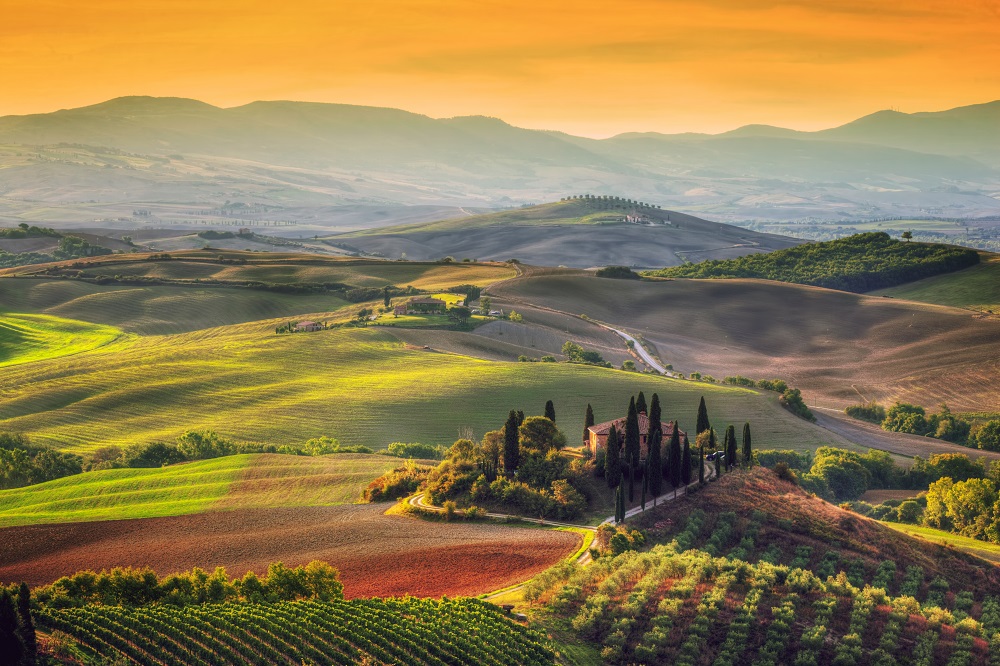
It is difficult to know what to say about central Italy; this is one of the most hyped, proselytized, and globally renowned destinations on earth. Florence and Siena, iconic countryside, hilltop villages, Etruscan tombs, etc., does this all sound just a tad predictable? If so, let us introduce you to the vineyards of the Marche region. Blissfully uncrowded and unspoiled, Marche has become an epicenter of superlative white wine. Flanked by the beautiful Adriatic on Italy’s east coast, its undulating landscape can yield wines that give Albarino and Riesling a serious run for their money.
Its two-star varieties are Pecorino and Verdicchio – the latter shines in the Verdicchio dei Castelli di Jesi zone in the southern reaches of Marche. Likewise, Pecorino has found its ideal home on the crumbly limestone soils of east-central Italy. In the 20th century, few consumers outside central Italy had even heard of these two varieties. Today, they are traveling far and wide as a new generation of oenophiles devolve headfirst into the wonders of Italian white wine.
Main white grape varieties of Marche
Pecorino
Not to be confused with Italy’s famous hard cheese – a gastronomic highlight of any tour – Pecorino is the country’s answer to New Zealand’s Sauvignon Blanc. That is to say, a white grape that consistently delivers fresh, fruit-driven, and aromatic wine. But, unfortunately, we have yet to meet a wine lover who would turn their nose up at a glass of chilled Pecorino.
Verdicchio
This could well be the finest white grape of central Italy. Yet it does not make life easy: Verdicchio is susceptible to powdery/downy mildew and rot. But, it can deliver utterly sumptuous and complex wine if the terroir is up to scratch.
Tuscany is a paradox. The region’s scenery is among the most iconic on the planet: every Instagram feed worth its salt has pictures of cypress trees, olive groves, and endless rows of vines. Moreover, it produces two of Europe’s most venerable wine styles – Chianti Classico and Brunello di Montalcino. And yet, the region has very little international cachet as a source of premium white wine. This is partly due to climate and terroir; much of the interior enjoys very warm summers that may be unsuitable for early-ripening white grapes. Yet Tuscany is not completely inert in terms of white wine. The Bolgheri and the Maremma coastal regions produce some excellent wines, albeit they are heavily planted to international varieties rather than indigenous ones.
Nevertheless, there is no questioning the pedigree of Ornellaia Bianco, a Sauvignon Blanc-dominant blend of immense concentration and finesse. Some exciting Vermentino wines are also being made in northwest Tuscany today, in addition to the remarkable Semillon cultivated at Tenuta di Trinoro. Some fine whites are even being coaxed out of the local workhorse Trebbiano Toscano, a grape once widely associated with acidic dross.
However, Tuscany only has one official DOCG white appellation. The famous towers of San Gimignano are some of the most striking architectural landmarks in the Tuscan landscape. But, less commonly known, the surrounding area is planted with an esoteric variety called Vernaccia. Although it was once derided as ‘tourists plonk’ (with more than a little justification!), Vernaccia di San Gimignano is now fastidiously made, as the customer base has become much more discerning of late. Maturation in new wood, once a taboo, is increasingly used to add a touch of class and structure to this potent grape.
Main white grape varieties of Tuscany
Inzolia (Ansonica)
Inzolia can be a tricky one. In warm climates, the acidity can plummet all too rapidly before the berries can be picked at optimum flavor ripeness. Its vigor must also be controlled throughout the growing season. Nevertheless, growers continue to champion the grape, as it produces very fine and complex wine.
Trebbiano Toscano
It takes real skill and experience to produce exceptional wine from this ordinary grape variety. But, as Petrolo and Castelli del Grevepesa have demonstrated, it can be done. Ironically enough, Trebbiano is too easy to grow, delivering an inflated yield of large berries in most circumstances. The grower’s job is to temper that vigor and mercilessly prune the vine.
Vermentino
Discussed above
Vernaccia di San Gimignano
There are approximately 720 hectares planted to Vernaccia in central Tuscany today. Yet, you’ve probably never heard of this regional white wine, a style that remained a local curiosity throughout the 20th century. This is slowly changing, however, as producers look to new markets. In addition, the grape itself can be tricky: Vernaccia is vulnerable to fungal diseases such as powdery and downy mildew.
Italy’s only landlocked region has far more to offer than people realize. Indeed, the vineyards on both sides of the Po River have been cultivated since Etruscan times; Orvieto was a vital Etruscan stronghold before the Romans conquered mainland Italy in the 2nd century BC. Unfortunately, the region traded quality for volume in the mid-1900s, producing large volumes of bland Trebbiano Toscano wines.
Thankfully, the emerging generation has turned things around and elevated Orvieto to the ranks of the first-division wine zone. Its gift to the world is full-bodied whites of nutty intensity, capable of aging for many years. The secret to Orvieto – besides excellent terroir – is the reliably excellent Grechetto variety. Local innovators, however, are just as likely to label their wines IGT Umbria as rely on the appellation bodies. Nevertheless, Colli Martani is a proven source of delicious Grechetto wines. After a false dawn, the Umbria region is now well on its way to becoming internationally recognized for the quality of both its superlative white wines.
Main white grape varieties of Umbria
Grechetto
There is much to admire about Grechetto. The variety is not prone to delivering an excessive yield – quite the opposite. It is also a survivor with a strong inbuilt resistance to fungal diseases and other maladies. It produces Umbria’s finest white: Orvieto.
Trebbiano Toscano
Discussed above
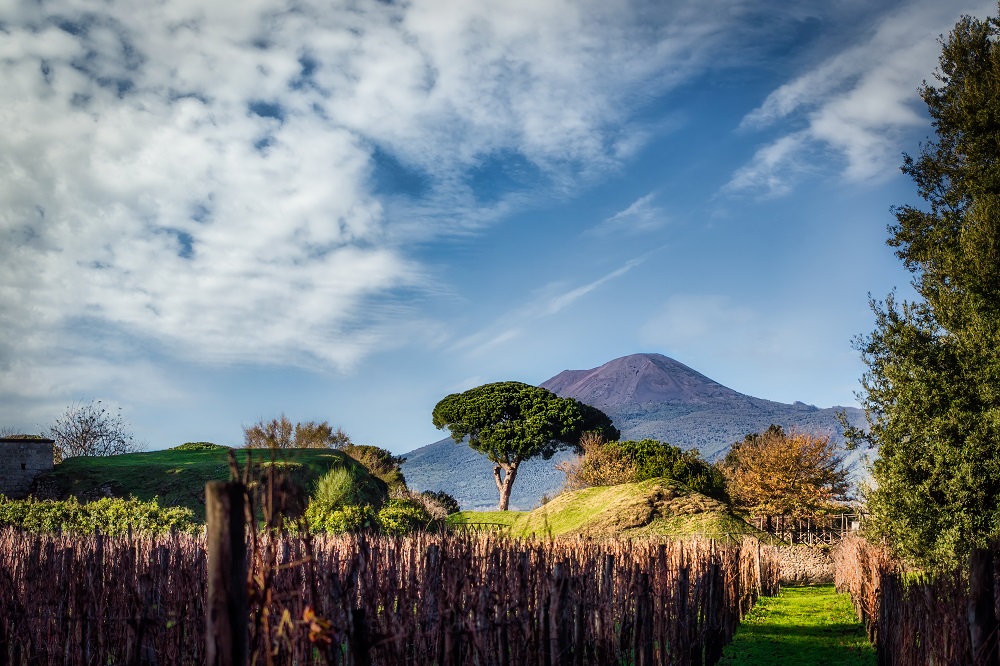
If the dramatic landscapes of the Campania region don’t electrify your senses, you should check your pulse. The Amalfi coast put the region on the global map in the 19th century. This collection of pastel-colored villages embedded into the cliffs has attracted A-list celebrities for many decades. In Naples, it is possible to dine like an aristocrat for a song, not least because the BEST pizza in the world is made here. It is also a veritable outdoor museum, with Pompeii’s remains and other ancient world relics.
However, while Campania’s cultural and gastronomic offering has long been admired, consumers have only (relatively) recently discovered the irresistible charms of its white wines. After a period in the doldrums, pioneers such as Mastroberardino and Antonio Capaldo (part of the family that owns Feudi di San Gregorio) have resuscitated the reputation of Campanian wine. The region has struck a chord with trend-conscious buyers and hipster sommeliers by focusing on indigenous varieties and sidelining bland imports. There is a world of exceptional quality to discover here, from the lime-scented delights of Greco di Tufo to the honeysuckle complexity of Falanghina.
Campania is also blessed with an exceptional terroir. Many credit Greco and Fiano’s apple peel fragrance and mineral depths to the tuff rock (compacted volcanic ash) on which they grow. In particular, the classical Fiano grape has a natural affinity with the volcanic soils of Campania, producing a wine that combines ripe fruit with a hauntingly floral bouquet. These grapes have become established names on the global wine scene and are now found in restaurants worldwide. This glorious region, once ignored and marginalized is on fire!
Main white grape varieties of Campania
Coda di Volpe
The name means “tail of the fox” in English: Coda di Volpe’s elongated berries were historically used to enhance the freshness and perfume of Campanian whites in a blend. However, growers are experimenting with producing single-varietal wines from the grape. As a result, it needs religious pruning throughout the growing season if premium quality is desired.
Greco
Everyone loves Greco, the star white grape of Campania. It delivers a most attractive style of white: aromatic, fruit-driven, and fresh. Unfortunately, it is usually marketed as a single-varietal style, although blends are not unheard of.
Fiano
This is arguably the greatest white grape of southern Italy. Fiano reaches an apogee in the hills of Avellino, where it produces seductive wines of remarkable finesse and freshness. Its floral bouquet is now appreciated across the world.
Falanghina
In the 1900s, Falanghina came close to extinction in the vineyards of southern Italy. Thankfully, a growing firmament of quality-minded producers has brought it back to life. If the vines are properly managed, Falanghina can yield high-quality wine, celebrated for its bouquet of honeysuckle, roasted pine nuts, and vanilla.
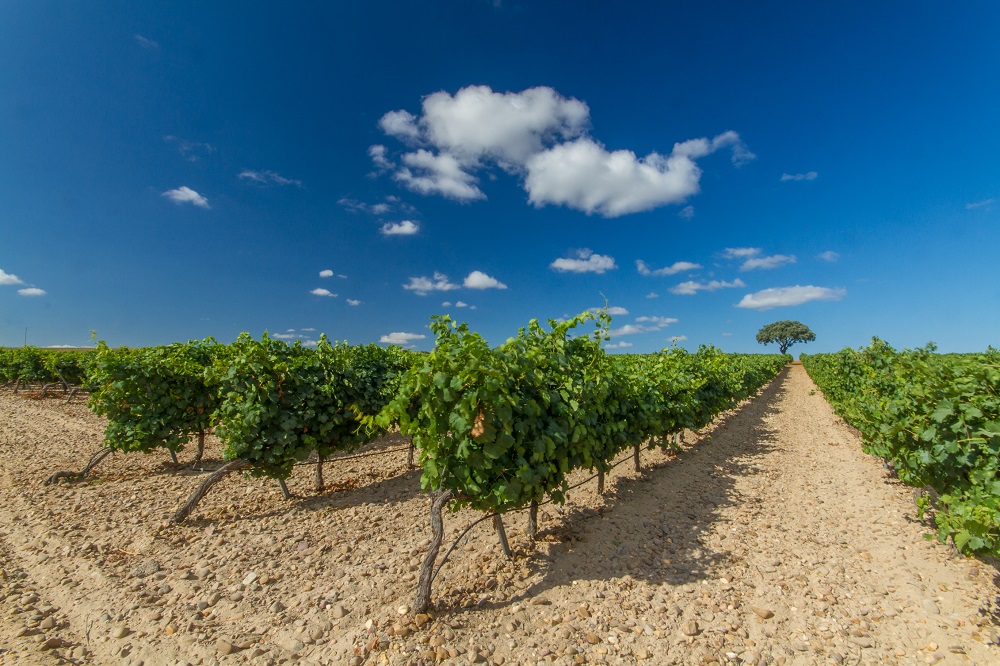
Any comparison between Sicily and Sardinia is not always to the latter’s benefit. A longstanding tourist magnet, Sardinia has only recently joined the ranks of premium wine producers due to a combination of grower apathy and lack of investment. Yet the island is making up for lost time by marketing a growing volume of delicious Vermentino. It is a very difficult grape variety to ignore: Vermentino produces delectable white wine, a rare breed of freshness, power, finesse, and acid.
Italy’s northern Mediterranean island may have been slower to join the international modern winemaking party, but it is increasingly self-sufficient in the fine wine stakes. It reaches an apogee in the spectacular landscape of northeast Sardinia, inland from the famous Costa Smeralda resort. Here, in the Vermentino di Gallura DOCG zone, a magical combination of heat and marine winds yields fantastically pungent and rich wines. And, best of all, a thousand and one superlative restaurants are just a walk away!
Main white grape varieties Sardinia
Vermentino
Discussed above
Sicily is the flavor of the month in wine circles. In addition to the millions of annual tourists, you’ll often see consultant agronomists marveling at the island’s incredibly diverse soils. Indeed, Sicily is a paradise for wine geeks: the range of elevations, aspects, and distinct terroirs has no parallel on the mainland. Best of all, the island offers a treasure trove of indigenous varieties and unique experiences.
This is all a far cry from the depressing state of Sicilian wine in the 20th century. Then, in the mid-1990s, Sicily was a very productive region, churning out gallons of alcoholic plonk for the bulk wine market. Thankfully, the island’s producers shifted their focus to quality in the early 00s, mindful of the increasing competition from the New World. The family firm of Tasca d’Almerita took the lead, sharing the fruits of their research with other growers. Yet, although progress has been witnessed across the island, much excitement and investment have coalesced around the volcanic slopes of Mount Etna.
A growing number of ambitious oenologists are making wine on an active volcano, including the Tuscan Franchetti family. Several grape varieties, including Catarratto, Carricante, Inzolia, and Grillo, continue to thrive on these mineral-rich soils. Catarratto was once regarded as a Sicilian workhorse; however, it can make stupendous wine on Etna’s slopes and in the Trapani province of West Sicily. It blends well with Inzolia (the Ansonica of Tuscany) and the beautifully fragrant Grillo – the latter has long been used to produce Marsala, Sicily’s iconic fortified wine.
Carricante is another real gem, used to make delicious and full-bodied whites across a range of different terroirs. The finest expressions carry the scent of sea air, rosemary, and honey. In the picturesque Aeolian islands, however, growers cherish the Malvasia grape. Increasingly used to make a more profitable style of dry white, Malvasia has long been responsible for the sweet honeysuckle-flavored wines of Malvasia delle Lipari.
Main white grape varieties Sicily
Catarratto
Catarratto’s destiny has evolved in recent years, shifting from ‘Marsala standby’ to an increasingly reliable source of premium table wine. It will crop at very high yields unless the grower ruthlessly efficiently manages pruning and canopy.
Carricante
This late-ripening variety thrives on the mineral-rich soils of Sicily, producing a deeply aromatic and saline style of white. Its moderate alcohol is another bonus in our age of moderation.
Grillo
Some would say that Grillo is Sicily’s finest white grape variety. It rarely crops at high levels and will retain good acidity in hot climates. The wine is no less excellent: heady with the scent of garrigue and pine nuts.
Inzolia
Discussed above
Malvasia Bianca
Part of an extensive family of grape varieties, Malvasia Bianca is used to make the delicious and remarkably fragrant passito wines of Lipari. Nevertheless, the vines are prone to overcropping unless their growth is held in check.
If you would like us to customize an exclusive luxury tour, contact us and let us know your travel plans. We offer luxury food and wine tours for private groups of a mininium two guests. In addition, all of our private, chauffeured tours are available year-round upon request.

